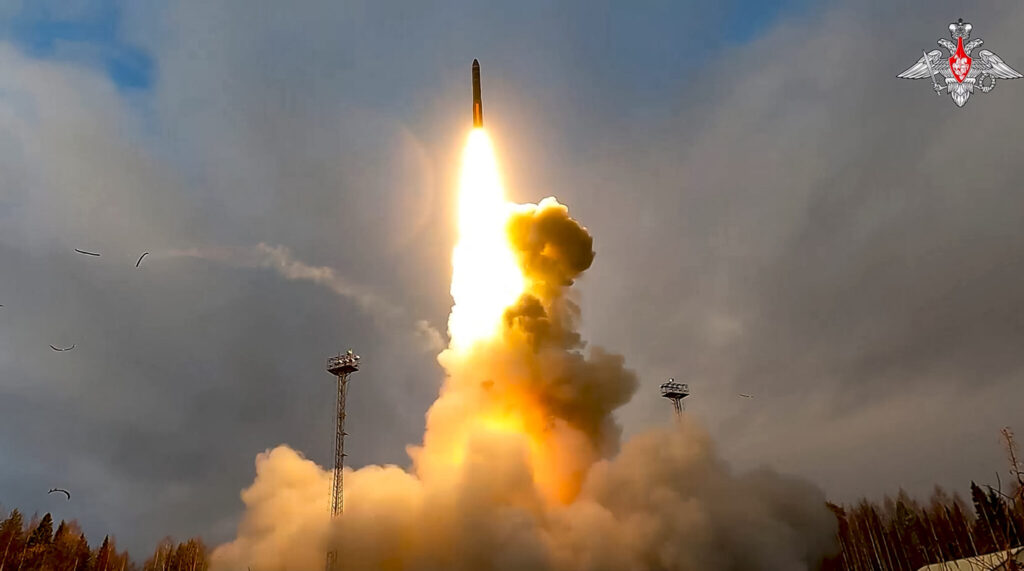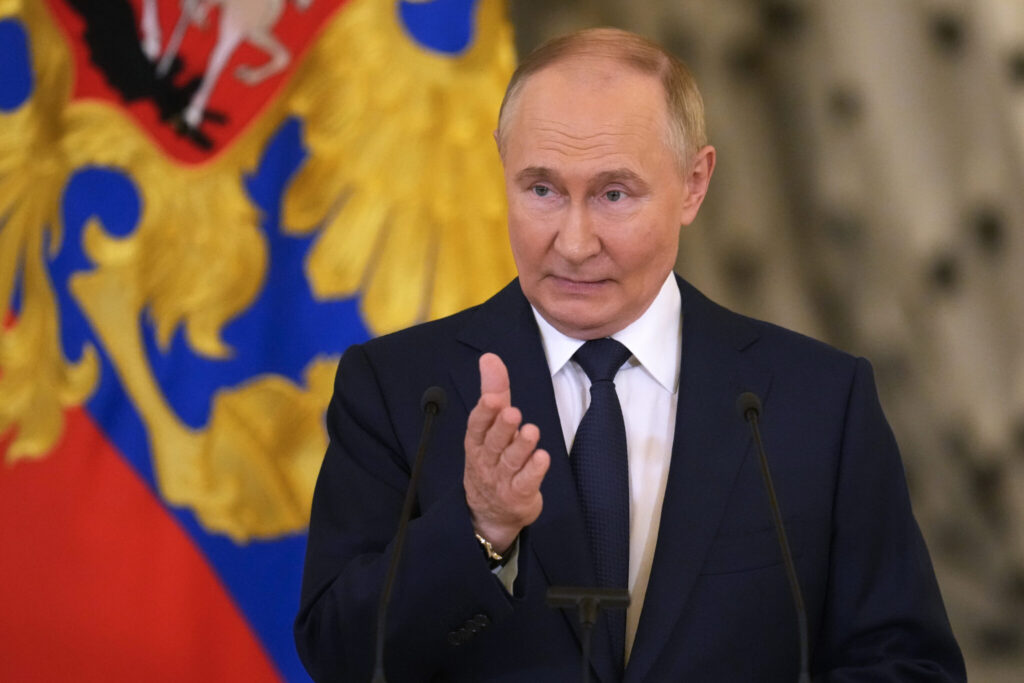Putin nuclear doctrine/ Russia NATO tensions/ nuclear weapons policy/ Ukraine conflict/ Biden long-range missiles/ Newslooks/ MOSCOW/ J. Mansour/ Morning Edition/ Russian President Vladimir Putin signed a revised nuclear doctrine broadening the circumstances under which Moscow might use nuclear weapons. The policy views conventional attacks supported by nuclear powers as joint aggression, escalating tensions following the U.S. decision to allow Ukraine to target Russia with advanced missiles. The doctrine also highlights broader triggers for nuclear response, reflecting Russia’s hardening stance amid its slow offensive in Ukraine.

Putin Expands Russian Nuclear Doctrine as Tensions Escalate
Key Points:
- New Doctrine Overview:
Putin signed a revised nuclear policy that considers any conventional attack on Russia by nations supported by nuclear powers a “joint attack,” potentially warranting a nuclear response. - Strategic Timing:
The update comes 1,000 days after Russia’s invasion of Ukraine and shortly after President Joe Biden approved Ukraine’s use of U.S.-supplied longer-range missiles for strikes within Russia. - Doctrine Details:
The document significantly broadens triggers for nuclear weapon use, including massive aerial assaults with drones, ballistic missiles, and other technologies. - Implications for NATO:
Any attack involving NATO members would be seen as aggression by the entire alliance, raising concerns about further escalation in the conflict. - Belarus Connection:
The doctrine includes protecting Belarus, a close Russian ally, and acknowledges the deployment of Russian tactical nuclear weapons on Belarusian soil.
Putin Updates Russian Nuclear Doctrine Amid Rising Tensions with West
Deep Look: Russia’s Revised Nuclear Doctrine Raises Global Alarm
A Broader Nuclear Threshold
Russian President Vladimir Putin has redefined the country’s nuclear deterrence strategy, signaling an increased willingness to resort to its nuclear arsenal. The doctrine, signed Tuesday, marks a major shift by broadening the scenarios under which nuclear weapons could be deployed.
Among its new provisions, the doctrine specifies that:
- Any attack on Russia involving support from a nuclear power will be deemed a “joint attack.”
- Aggression involving military blocs, such as NATO, will be viewed as an attack by the entire coalition.
- Conventional threats that pose a critical risk to Russia’s sovereignty or territorial integrity, including Belarus, could justify a nuclear response.
This shift comes as Putin faces a protracted war in Ukraine and increased Western military aid to Kyiv, including Biden’s approval for Ukraine to use longer-range U.S. missiles to target Russian territory.
Strategic Timing and Western Warnings
- U.S. Military Aid: President Biden’s decision to greenlight Ukraine’s use of advanced missiles has drawn sharp warnings from Moscow. Putin has previously declared that such actions would signify direct war with NATO.
- Ukraine War Anniversary: The policy was signed on the 1,000th day since Russia’s invasion of Ukraine, underlining Putin’s continued defiance amid mounting losses and international pressure.
Kremlin spokesperson Dmitry Peskov downplayed the timing, stating the revision was “timely” and had been planned earlier this year. However, many observers see it as a direct response to recent U.S. actions and growing Western support for Ukraine.
Expanding Triggers for Nuclear Use
Compared to previous versions, the new doctrine significantly expands the scenarios for nuclear deployment:
- It now includes “massive aerial attacks” using ballistic and cruise missiles, drones, and aircraft.
- It acknowledges the “uncertainty of scale, time, and place” of potential nuclear use, reflecting a more ambiguous approach to deterrence.
- The policy explicitly protects Belarus, where Russian tactical nuclear weapons have already been deployed.
These changes underscore Moscow’s intent to signal its readiness to use nuclear force to deter perceived threats, particularly from NATO-backed Ukraine.
Belarus: A Strategic Ally
- Belarus has served as a staging ground for Russian troops during the Ukraine war.
- Russian tactical nuclear weapons have been deployed within Belarus, underscoring the country’s strategic role as a buffer zone.
Lukashenko’s alignment with Moscow solidifies Russia’s position in Eastern Europe but also risks further entrenching regional instability.
Global Implications
Russia’s revised doctrine has drawn widespread concern from international observers and U.S. officials. Critics argue that the broadened language and ambiguous thresholds for nuclear use increase the risk of miscalculation, particularly amid heightened tensions with NATO.
Russian hardliners, however, have long advocated for a tougher nuclear stance. They contend the previous doctrine failed to deter the West from arming Ukraine and created an impression of Moscow’s reluctance to use its arsenal.
As Putin doubles down on his nuclear rhetoric, Western nations face mounting pressure to navigate the conflict without provoking further escalation.







